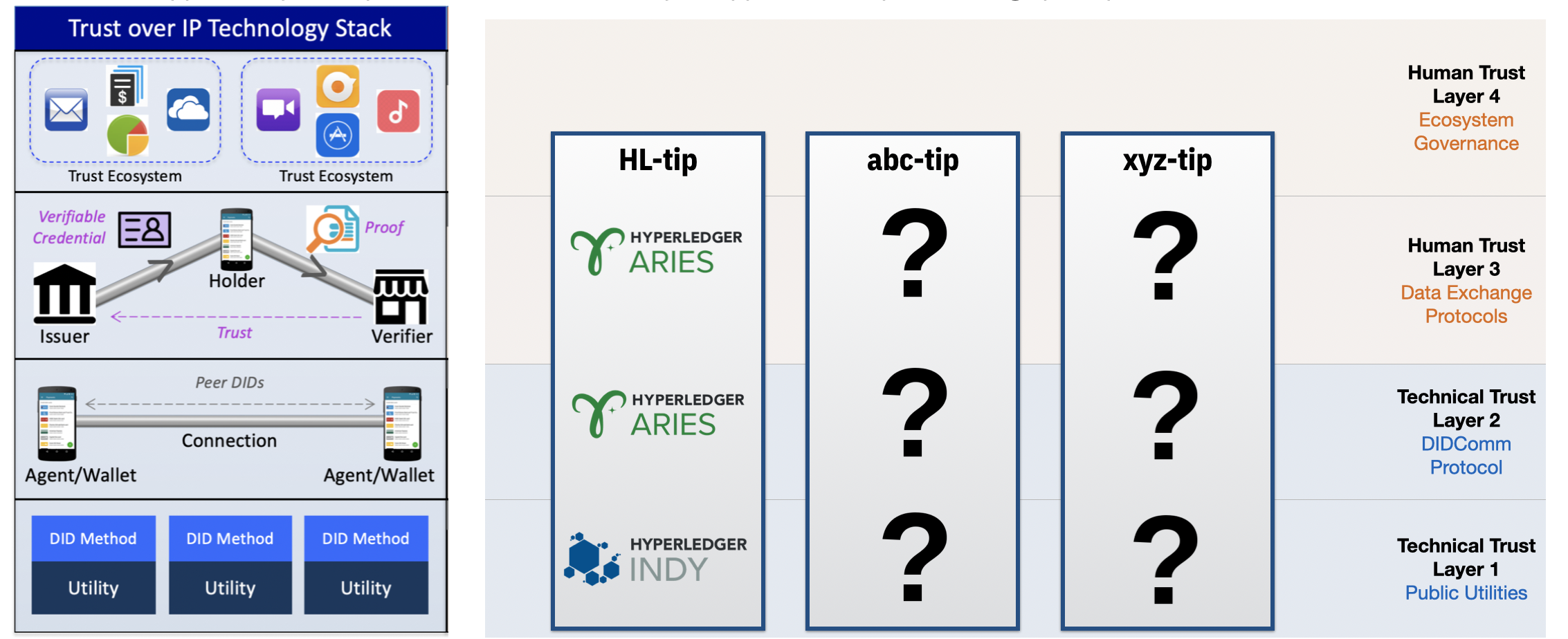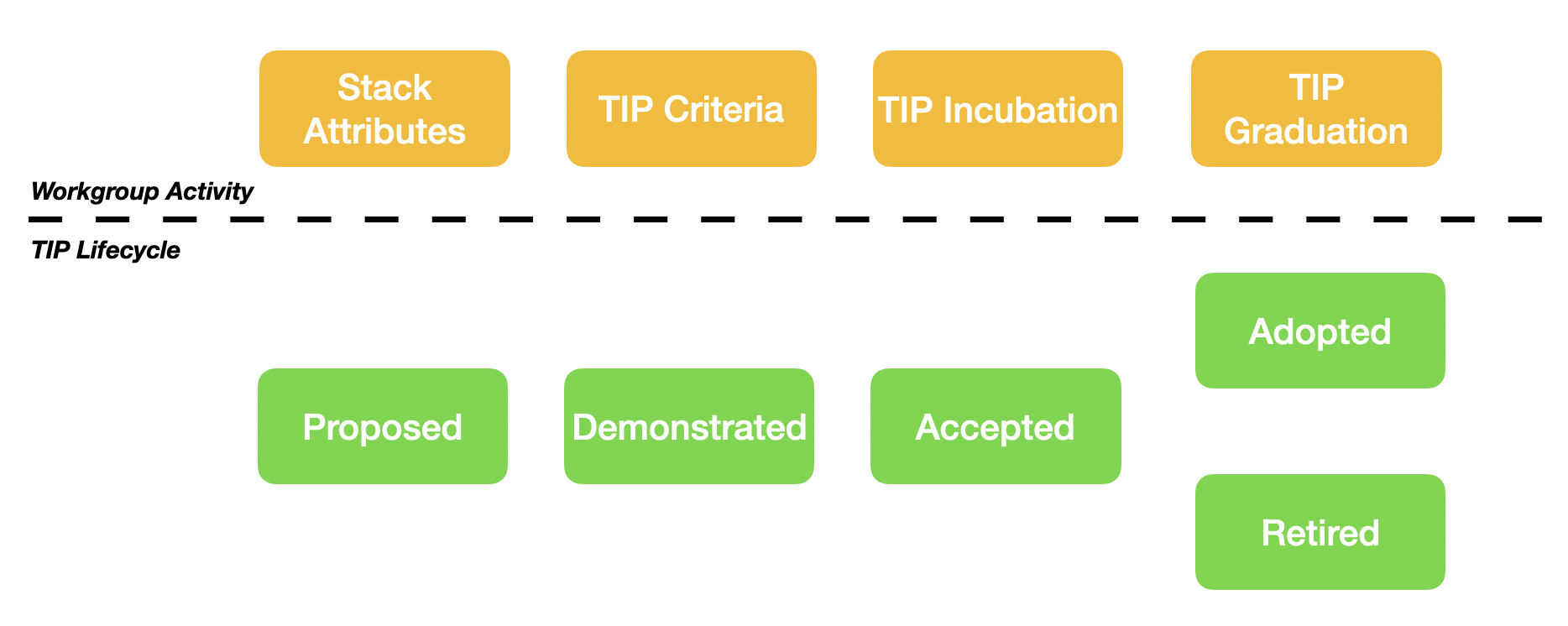
Disclaimer: The content herein represents preliminary brainstorming.
A ToIP Interoperability Profile (TIP) represents a specific combination of technologies that span each layer of the ToIP Technical Stack. TIPs can be designed, refined and supported by interoperable vendors. A TIP will often be applicable to specific design principles and use cases.
As we seek solutions for an interoperable digital trust marketplace, we must recognize that market dynamics will often drive solution incubation and adoption. Keeping with the cooking analogy, ingredients are to recipes as technology components are to solution architectures.

For example, we can imagine a TIP associated with the use of Hyperledger Indy and Hyperledger Aries at layers 1-3. But a TIP is more than the association of technology to layers of the technical stack; a TIP must address other market dynamics:
A TIP represents a descriptive solution outline that once matured can be considered a market proven solution specification.
Why do we need TIPs?
Ultimately, entities (business, governments, organizations) that seek to participate in an interoperable digital trust marketplace will need to assess (compare) solution architectures. Analogous to a Request for Proposal (RFP) process, entities should be able to align their requirements with the principles and expectations described by a TIP and use such a comparison exercise to make educated decisions. Allow when to compare apples-to-apples and when necessary enable clear articulation of apples-to-oranges activities.
As Ecosystem Projects (See Ecosystem Foundry WG) evolve they will need to define governance frameworks and select a TIP.
In a utopian world solution architectures would be interoperable both vertically and horizontally across the Technology Stack. But this is not the goal of ToIP and in fact at some layers of the technology Stack, horizontal interoperability is not even necessary.
For clarity, TIPs needs to first focus on vertical interoperability where the connecting of the technology components at each layer is seamless and well understood. Horizontal interoperability across TIPs is not important until we have 2 or more TIPs with enough market adoption to necessitate community energy.
While horizontal interoperability at layer 3 (a wallet affiliated with TIP-A can exchange data with a wallet that supports TIP-B and both TIPs use different Layer 3 tech) would be important, the ability of a Layer 1 Utility based of on technology-A needing to exchange data with a Utility based on technology-B is less important.
The Technical Stack WG is responsible for the processes and procedures of the WG as well as the lifecycle of TIP incubation.

The ToIP Foundation, which is technology agnostic, represents a collaborative forum where solution “recipes” can be matured and vetted in the market.
Note: These lifecycle stages are derived from the Hyperledger Aries RFCs Process.
TEMPORARY CONTENT:
| 2 min | Review of action items from the previous meeting | Chairs |
|
| 5 min | Reminder of IPR Mode Transition & Call for Exclusions | Chairs | As announced by Judith Fleenor on 25 August 2023 in an email to all members, the TSWG is transitioning from its current IPR mode (Creative Commons Attribution 4.0 for copyright, W3C Mode for patents, Apache 2.0 for source code) to a new IPR mode (Open Web Foundation 1.0 for copyright and patent, Apache 2.0 for source code). On 23 August 2023, the ToIP Steering Committee passed a resolution approving this rechartering that directed the Executive Director and the TSWG Co-Chairs to take the following steps to carry out this resolution:
Any TSWG member who wishes to declare any patent claim exclusions on work contributed to existing TSWG deliverables must do so by midnight Pacific Time on 25 October 2023. |
| 5 min | Nomination of new TSWG Co-Chair | Chairs | Kevin Griffin has volunteered to join Darrell O'Donnell and Drummond Reed as a third co-chair of the TSWG. DECISION: Kevin Griffin ______ as co-chair of the Technology Stack Working Group. |